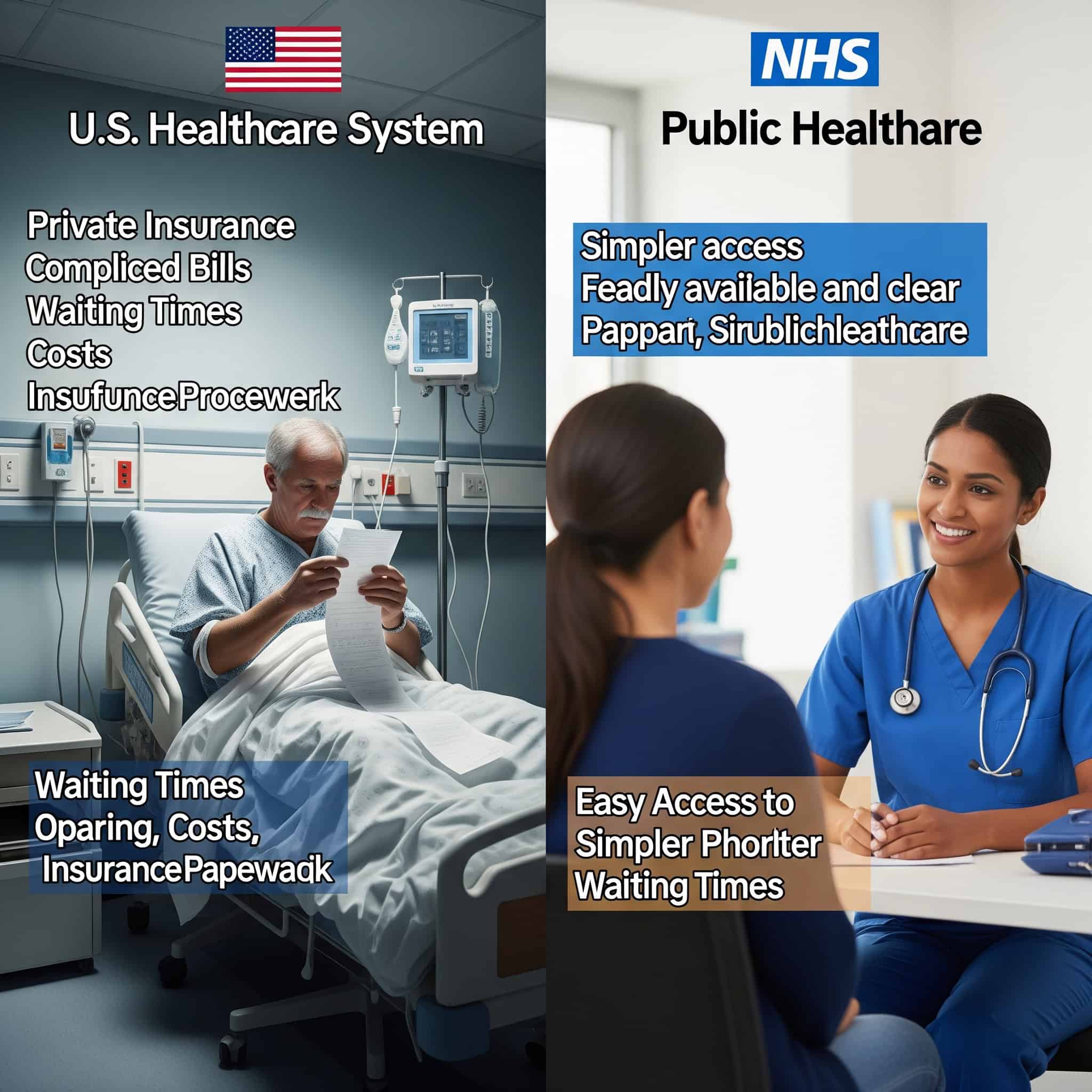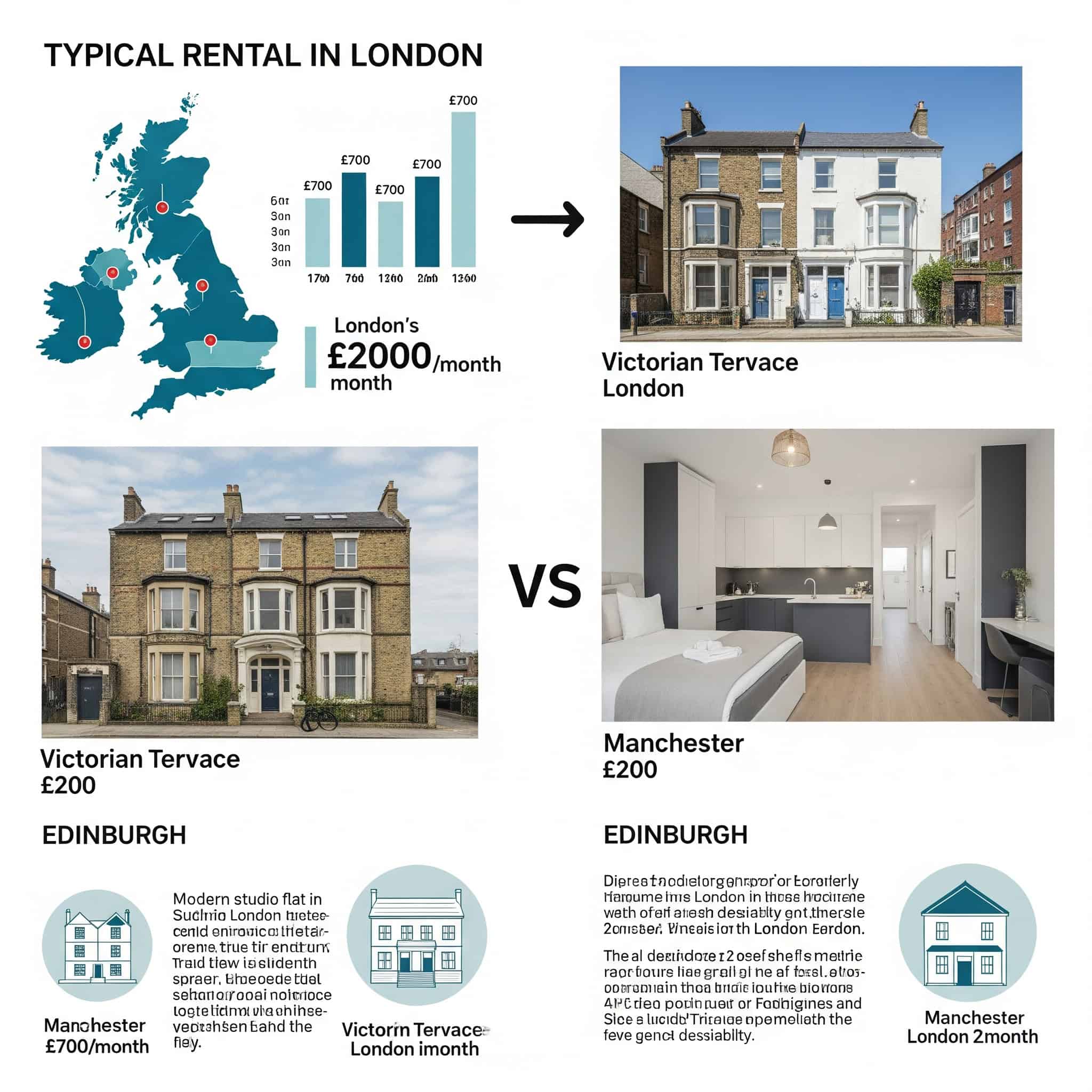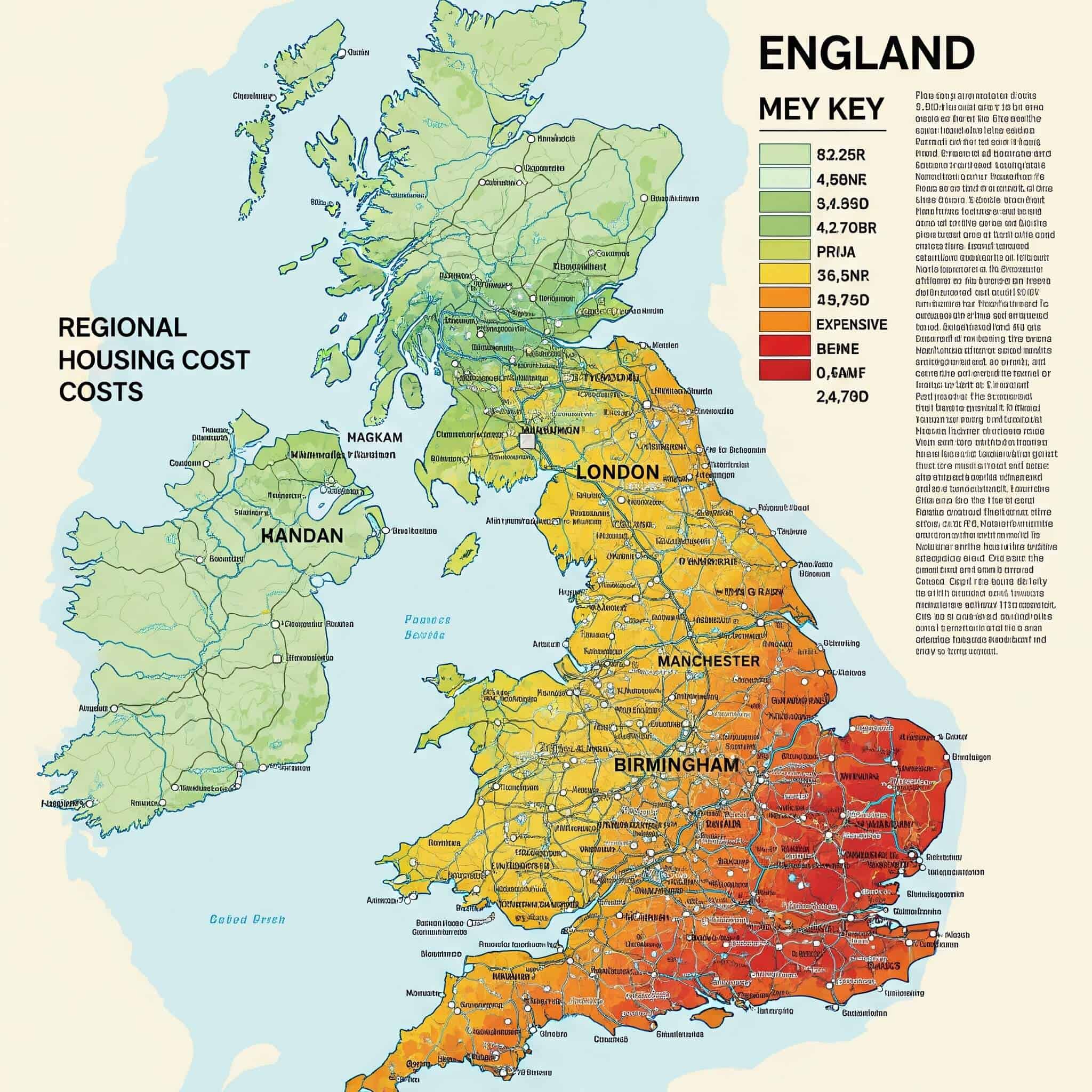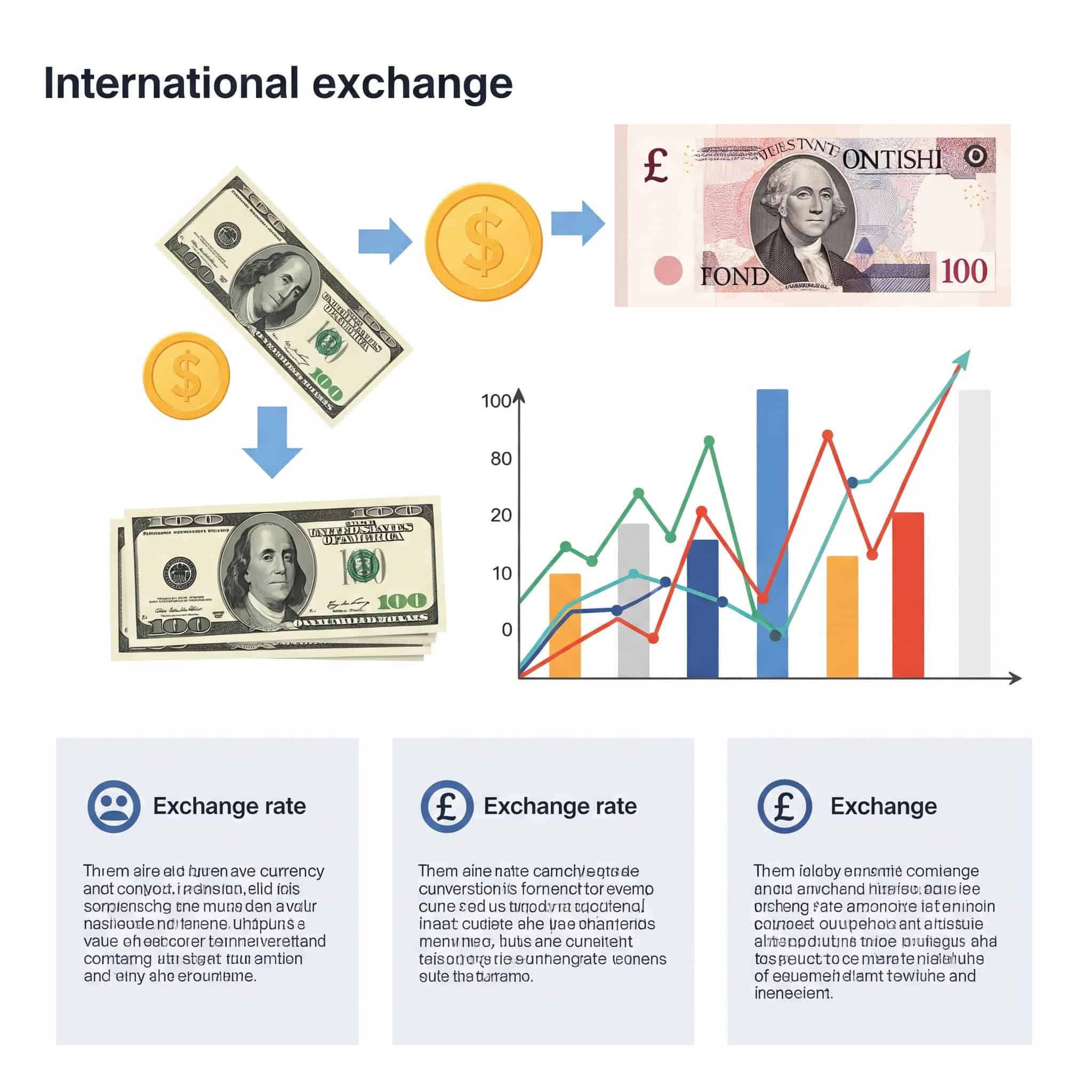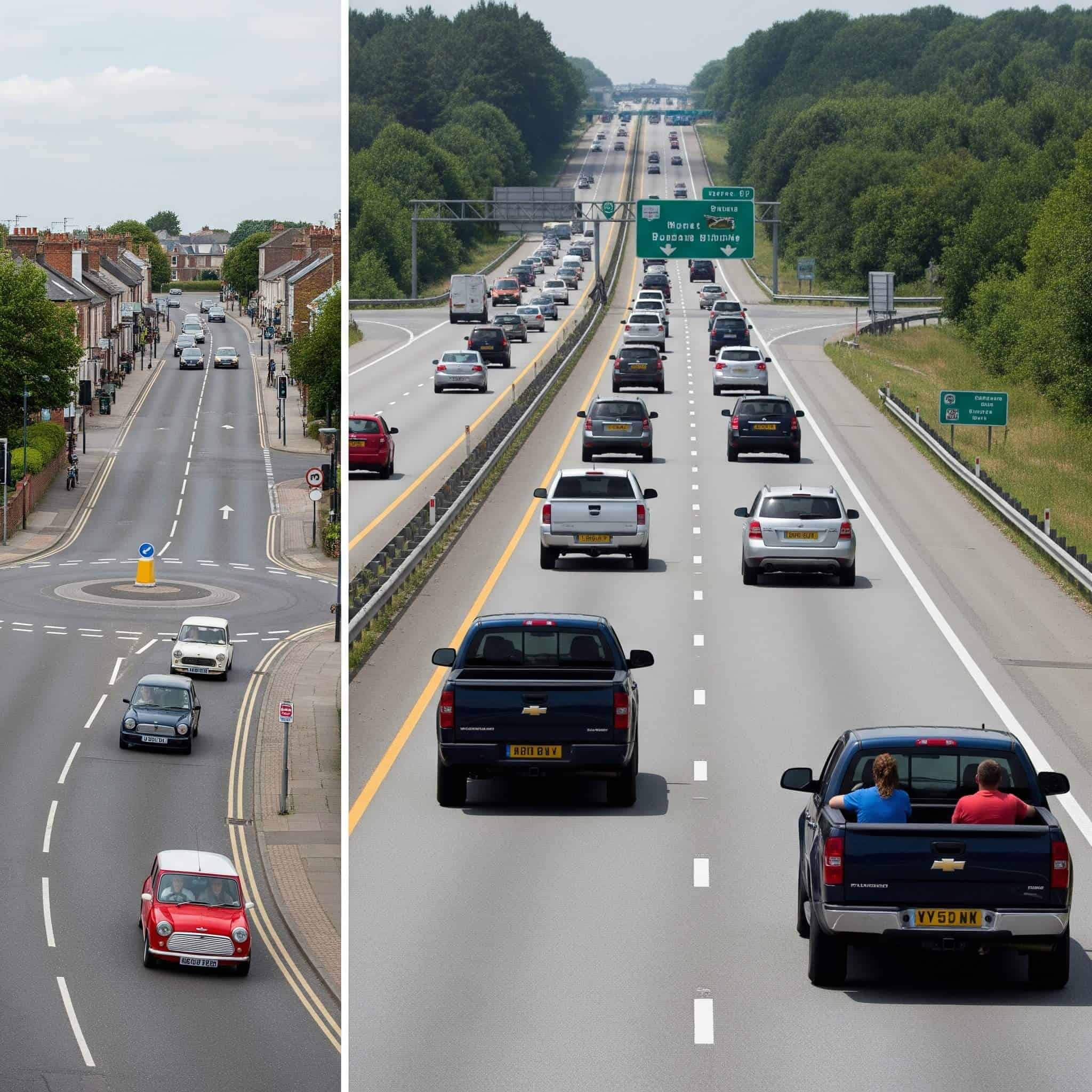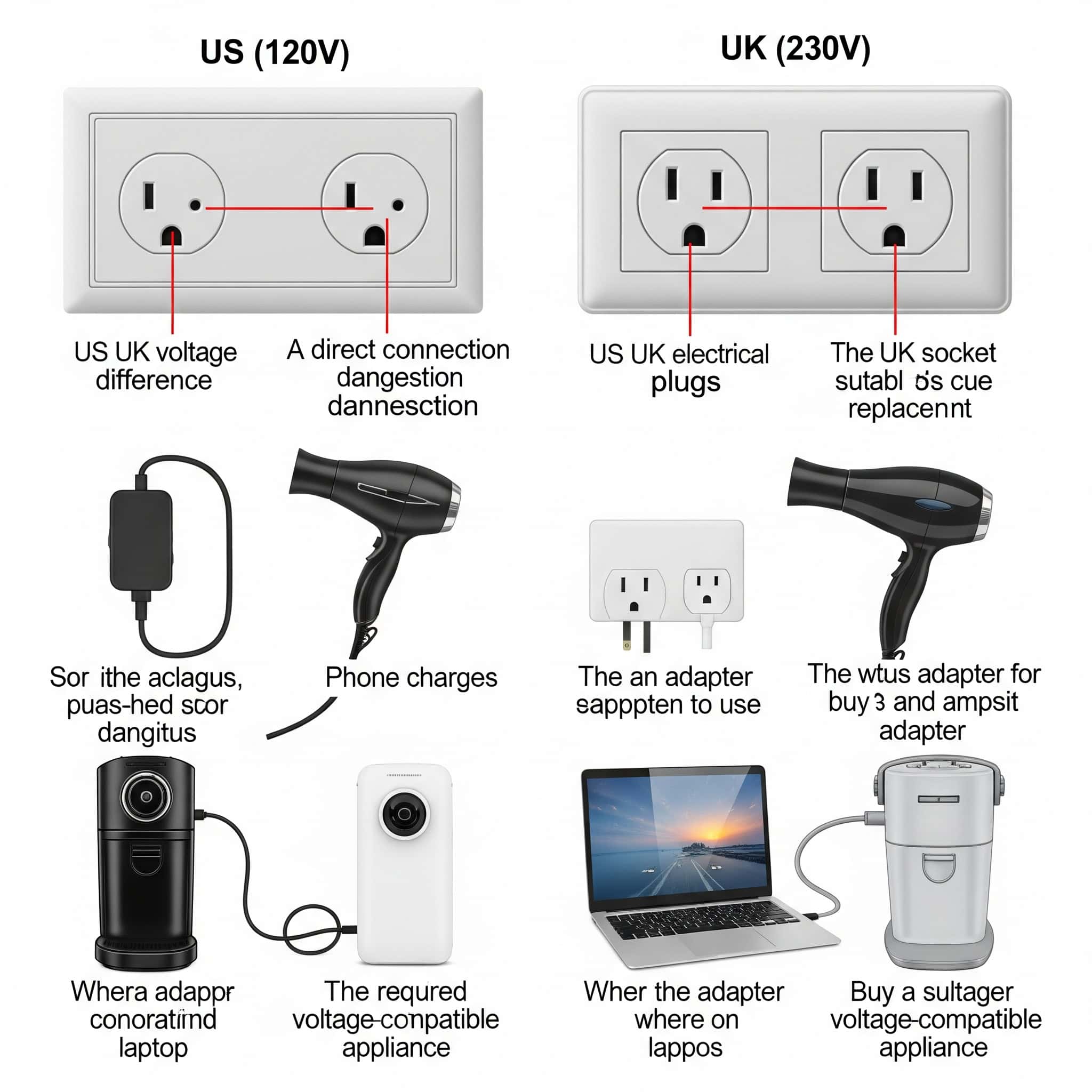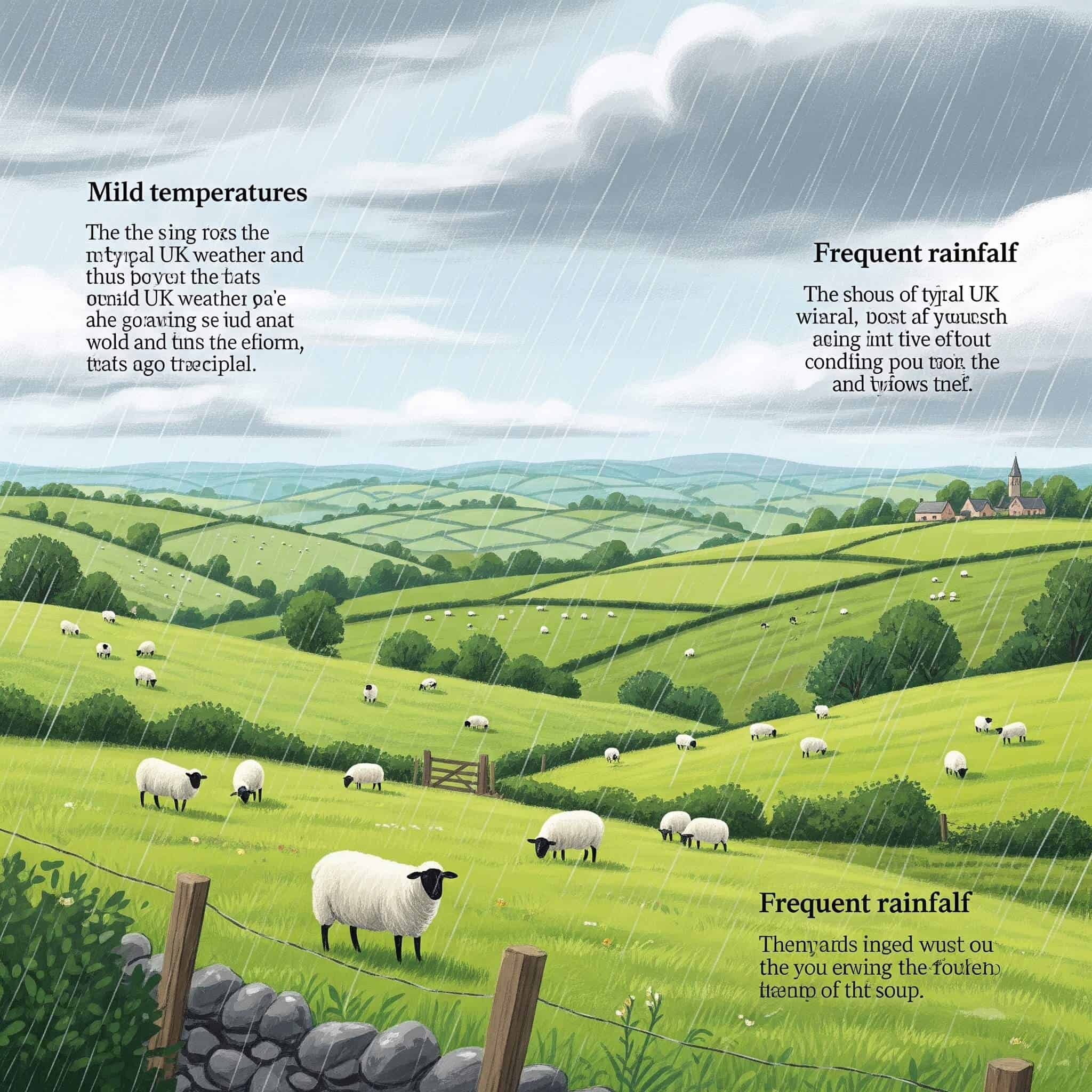Moving to England from the US: 25 Essential Considerations for a Smooth Transition
Table of Contents
Key Considerations Before Your Move
Visa and Legal Requirements
Housing and Relocation Essentials
Financial Planning for Expats
Daily Life Adaptation Strategies
Practical Preparations for UK Living
Additional Important Considerations
How Jiffy Junk Can Help With Your International Move
Final Thoughts
Key Considerations Before Your Move
Moving to the UK requires thorough planning across multiple areas. I’ve discovered that UK immigration policies have changed dramatically since Brexit, creating a more complex points-based system that prioritizes skilled workers. The cost of living varies wildly depending on where you settle – London and Southeast England will generally hit your wallet harder than many US locations.
One of the biggest adjustments I faced was transitioning from private US health insurance to the National Health Service (NHS). You’ll need to understand registration procedures and how the system works before you arrive. The job market also differs significantly between our countries, which affects both salary expectations and how your qualifications transfer.
Don’t be fooled by our shared language! The cultural differences between the US and UK can be surprising. British social norms and communication styles often emphasize understatement and reserve, which can initially feel confusing if you’re used to American directness.
Immigration policies now operate on a points-based system that prioritizes skilled workers, family connections, and exceptional talents. Each visa category has specific financial thresholds you’ll need to meet. Professional qualification recognition often requires additional certification or examination, particularly in regulated fields like healthcare, law, engineering, and education.
Key Difference | United States | United Kingdom |
|---|---|---|
Healthcare System | Primarily private insurance | National Health Service (NHS) |
Measurement System | Imperial (miles, pounds) | Metric with some imperial exceptions |
Driving | Right side of road | Left side of road |
Electrical System | 120V/60Hz | 230V/50Hz |
Academic Year | August/September to May/June | September to July |
Visa and Legal Requirements
1. Standard Visitor Visa
The Standard Visitor Visa has been my go-to recommendation for preliminary visits before making the big move. It allows stays up to 6 months without working rights, which is perfect for exploring neighborhoods, viewing properties, or networking before your permanent relocation to the UK.
I need to emphasize that you cannot use this visa for actual relocation, employment, or accessing public funds. Processing typically takes 3-4 weeks and requires proof of sufficient funds and intention to return to the US.
Your application requires evidence of accommodation plans, return travel arrangements, and financial means to support yourself without working or accessing public funds. Multiple-entry visitor visas valid for 2, 5, or 10 years are available but still limit individual stays to 6 months and prohibit establishing UK residency.
2. Skilled Worker Visa
The Skilled Worker Visa represents the most common path for Americans relocating for employment. Your success depends on securing sponsorship from a UK employer with a valid license. The position must meet skill and salary thresholds (typically £26,200+ annually, though this varies by occupation).
This visa initially lasts up to 5 years and can lead to permanent residency after 5 years of continuous residence. When I moved to the UK, I found that having a job offer lined up before applying made the process much smoother.
You’ll need a job offer from a UK employer with a sponsor license for a role that meets the required skill level (usually RQF level 3 or above) and appropriate salary threshold. The application includes a points assessment where mandatory criteria (job offer, skill level, English language proficiency) must be met alongside tradeable points from salary level, shortage occupation status, or relevant PhD qualification.
3. Global Talent Visa
The Global Talent Visa offers greater flexibility for recognized leaders in arts, sciences, or digital technology without requiring employer sponsorship. I’ve seen this work well for colleagues who have established reputations in their fields.
You must receive endorsement from recognized UK bodies like Tech Nation, Arts Council England, or British Academy. This visa allows self-employment and can fast-track permanent residency after 3 years instead of the standard 5 years required by most other visa categories.
If you’re bringing valuable items to the UK, you might need to plan for proper disposal of your remaining belongings. Learning about eco-friendly trash removal services can help you responsibly manage what you leave behind.
The two-stage application process involves first securing endorsement from a designated body in your field, then applying for the actual visa once endorsement is confirmed. Endorsement criteria vary by field but generally require evidence of international recognition, significant contributions to your discipline, and potential for continued impact in the UK.
4. Family Visas
Family Visas provide options if you have British spouses, partners, or close relatives. Spouse visas require proving a genuine relationship and meeting the financial requirement of £18,600+ annual income.
The application process involves extensive documentation of your relationship history and financial stability. I was surprised by how detailed this process was – they want to see everything from joint bank accounts to photos together spanning your relationship. Processing times average 3-6 months, and initial visas are typically granted for 2.5 years before renewal.
When moving to the UK from USA, I found that financial requirements increase by £3,800 for the first child and £2,400 for each additional child not holding British citizenship. Relationship evidence typically includes communication records, photographs together, joint financial responsibilities, and proof of having met in person for unmarried partners.
5. Ancestry Visa
The Ancestry Visa isn’t typically available to Americans unless they hold dual citizenship with a Commonwealth country. If you have a grandparent born in the UK and citizenship in a Commonwealth nation, this visa allows you to live and work in the UK for five years.
After this period, you become eligible to apply for permanent residency. This option is worth exploring for those with mixed heritage who might qualify for Commonwealth citizenship.
You’ll need to prove both your Commonwealth citizenship and direct ancestral connection through birth certificates and marriage records linking you to your UK-born grandparent. Unlike most other visa categories, the Ancestry Visa allows immediate full working rights without occupation restrictions or sponsorship requirements.
Housing and Relocation Essentials
6. Renting vs. Buying Property
Most expats rent initially while learning local markets. I found that typical London one-bedroom apartments range from £1,500-£3,000 monthly in central areas, with lease terms requiring 6-12 month commitments.
You’ll need references and security deposits (5-6 weeks’ rent). The UK property purchase process differs significantly from the US system, with solicitors handling transactions and no multiple listing service equivalent. First-time buyers often struggle with the substantial deposits required (typically 10-25% of purchase price).
When moving to the UK, I discovered that rental applications require proof of right to rent in the UK (visa status), credit checks, employment verification, and sometimes UK-based guarantors for those without UK credit history. Property purchases involve a sequence of searches, surveys, and legal processes that typically take 2-4 months from offer acceptance to completion, with non-refundable costs incurred throughout.
Sarah, a software engineer from Boston, initially rented a one-bedroom flat in Manchester for £950/month while exploring different neighborhoods. After six months, she identified Northern Quarter as her preferred area and signed a 12-month lease for £1,100/month. She needed to provide her Skilled Worker Visa documentation, three months of bank statements, an employment letter, and pay a five-week security deposit (£1,269). Her US credit history wasn’t recognized, so she paid three months’ rent in advance (£3,300) to secure the property without a UK guarantor. After two years of UK residency, she had established sufficient credit history to qualify for a mortgage with a 15% deposit on a £220,000 two-bedroom flat.
7. Regional Housing Markets
Housing costs vary dramatically across England. While London averages £500,000+ for homes, cities like Manchester, Birmingham, and Leeds offer significantly better value (£200,000-£350,000 for comparable properties).
I’ve found that commuter towns like Reading, Guildford, or St. Albans offer compromise between London access and affordability. Northern England and the Midlands provide substantially lower housing costs but may offer fewer international connections and employment opportunities in certain sectors.
Moving to England means understanding that price-to-income ratios vary from approximately 14:1 in London to 5:1 in northern regions like Yorkshire, affecting mortgage affordability and quality of life. Transportation infrastructure significantly impacts property values, with homes within walking distance of train stations commanding 10-20% premiums over similar properties without such access.
City/Region | Avg. 1-Bed Rental (Monthly) | Avg. 3-Bed Home Purchase | Commute to London |
|---|---|---|---|
London (Central) | £1,800-£2,500 | £650,000-£1.2M | N/A |
Manchester | £750-£950 | £220,000-£350,000 | 2h 15m by train |
Birmingham | £700-£900 | £200,000-£320,000 | 1h 30m by train |
Bristol | £900-£1,200 | £300,000-£450,000 | 1h 45m by train |
Edinburgh | £800-£1,100 | £280,000-£400,000 | 4h 30m by train |
Leeds | £700-£900 | £190,000-£300,000 | 2h 30m by train |
Reading | £950-£1,200 | £350,000-£500,000 | 30m by train |
8. International Moving Services
Moving your belongings overseas requires choosing between full-service relocations (handling packing, shipping, customs clearance, and delivery) or budget-friendly shared container services. Full container loads (FCL) cost £4,000-£8,000 from East Coast US cities, while partial shipments might range £1,500-£3,000.
Air freight offers faster delivery (1-2 weeks) but at 4-8 times the cost of sea freight, which typically takes 4-12 weeks door-to-door. I opted for sea freight for most of my belongings and only air-shipped essential items I needed immediately.
When preparing for your international move, considering top reasons to enlist a hauling service can help you manage the logistics of clearing out your American home before relocating to England.
Customs documentation requires detailed inventory lists with values, with certain items (electronics, alcohol, new goods) potentially incurring import duties despite being personal effects. Insurance coverage typically offers replacement value protection at rates of 2-3% of the declared value, with specific exclusions for fragile items unless professionally packed.
9. Temporary Accommodation
You’ll likely need temporary housing while searching for permanent accommodations or waiting for shipped belongings. Options include serviced apartments (£100-£200/night), extended-stay hotels, or short-term rentals through platforms like Airbnb.
These temporary solutions provide flexibility but cost significantly more than standard rentals. I recommend booking well in advance, especially during summer months when tourism peaks and university terms begin, creating accommodation shortages in many cities.
Moving to England from US requires understanding that serviced apartments typically include weekly cleaning, utility bills, WiFi, and fully equipped kitchens, making them more practical than hotels for stays exceeding two weeks. Short-term rental agreements often carry premium rates 30-50% higher than standard leases, but may offer flexibility with notice periods as short as two weeks versus the standard two months.
10. Council Tax Understanding
Council Tax is a required property tax in the UK based on property value bands. Rates typically range from £1,200-£3,000 annually depending on your property’s valuation band and local authority.
This tax funds local services like waste collection, road maintenance, and police. Unlike US property taxes, Council Tax is separate from rent and remains the occupant’s responsibility rather than the property owner’s. I was pleased to discover that single-person households qualify for a 25% discount, which saved me a significant amount.
Properties are assigned to bands A-H based on their April 1991 valuation (regardless of current market value), with limited opportunities to challenge these historical assessments. Full-time students are exempt from Council Tax, while properties left unoccupied or undergoing major renovations may qualify for temporary discounts or exemptions depending on local authority policies.
Financial Planning for Expats
11. Banking Setup
Establishing UK financial presence presents initial challenges, particularly regarding proof of address requirements when you don’t yet have UK utilities or council tax bills. International banks like HSBC and Barclays offer expat accounts that can be initiated from the US.
Digital banks like Monzo and Revolut provide easier setup but may have limitations for larger transactions. Most traditional banks require in-person appointments to complete verification, so begin applications before arrival when possible. When moving to the UK, I found that starting this process early saved me weeks of financial limbo.
Basic bank accounts offer limited services without overdraft facilities but have less stringent application requirements, making them accessible entry points for new arrivals without UK credit history. International banking platforms like HSBC Premier require minimum balance thresholds (typically £50,000 in savings or £75,000 annual income) but offer dedicated relationship managers and cross-border account linking.
12. Tax Implications
The tax implications of dual-country status create complexity for American expats. The US-UK tax treaty prevents double taxation, but filing requirements remain in both countries.
The Foreign Earned Income Exclusion (FEIE) allows qualifying US expats to exclude up to $120,000 (2023 figure) of foreign earnings from US taxes. UK tax rates range from 20% (basic rate) to 45% (additional rate) depending on income brackets, generally higher than US rates. The UK tax year runs April-April, creating timeline misalignment with US tax deadlines.
Foreign Bank Account Reporting (FBAR) requirements mandate disclosure of non-US financial accounts exceeding $10,000 aggregate value, with substantial penalties for non-compliance. UK tax residency determination follows the Statutory Residence Test with three components: automatic overseas tests, automatic UK tests, and sufficient ties tests that consider factors like family connections, accommodation, and work patterns.
Michael, a marketing executive earning £75,000 annually in London, navigated the complex tax situation as follows: He filed Form 2555 with his US tax return to claim the Foreign Earned Income Exclusion, which eliminated his US federal tax liability on his UK salary. However, he still needed to report his UK bank accounts on the FBAR form since they exceeded $10,000 combined. In the UK, his income placed him in the higher rate tax band (40%), resulting in approximately £20,000 in UK income tax. He also maintained a rental property in Chicago generating $24,000 annual income, which was taxable in both countries. Using the US-UK tax treaty’s foreign tax credit provisions (Form 1116), he avoided double taxation by claiming UK taxes paid against his US tax liability on the rental income. He engaged a specialized expat tax accountant at £600 annually to ensure compliance with both tax systems.
13. Currency Exchange Strategy
Timing transfers can significantly impact your purchasing power when moving funds between dollars and pounds. Traditional banks typically charge 3-5% in hidden exchange rate markups, while specialized services like Wise, OFX, or Moneycorp offer rates closer to interbank rates with transparent fees.
Setting up regular transfers for ongoing expenses like mortgage payments can provide rate consistency. Forward contracts allow locking in current exchange rates for future large transfers, providing budget certainty for major purchases.
Exchange rate fluctuations of 5-10% within a single year are common, potentially affecting the dollar value of UK-based assets and income by thousands of dollars annually. Multi-currency accounts allow holding balances in both USD and GBP, enabling strategic timing of conversions when rates are favorable rather than converting funds immediately upon receipt.
14. Pension and Retirement Planning
Managing existing US retirement accounts requires strategic planning when moving to the UK. Options include maintaining US investments, considering rollovers, or establishing UK pension contributions.
UK pension contributions may receive tax relief but create US reporting requirements. The UK’s auto-enrollment workplace pension scheme differs significantly from 401(k) plans, with different contribution structures and investment options. Long-term residents should consider how retirement assets will be taxed in both countries during withdrawal phases.
Moving to the UK from USA means understanding that Qualified Recognized Overseas Pension Schemes (QROPS) offer potential solutions for consolidating retirement funds, but transfer taxes and reporting requirements changed significantly after 2017, requiring specialist advice. US Individual Retirement Accounts (IRAs) receive no special recognition under UK tax law, potentially creating double taxation scenarios without careful planning and utilization of tax treaty provisions.
15. Cost of Living Adjustment
Budgeting for UK expenses requires understanding typical costs beyond housing. Average monthly costs excluding rent for a single person range £700-£900, while a family of four might spend £2,500-£3,500.
Utilities, transportation, and groceries often cost more than in many US regions. Healthcare costs less through the NHS, but dining out, entertainment, and fuel prices typically exceed US equivalents. Regional variations are substantial, with London costs exceeding other areas by 20-40% across most categories.
Before relocating, many Americans need to declutter their homes, which can significantly reduce international shipping costs and help you start fresh in your new UK home.
Energy costs fluctuate seasonally and have seen significant volatility, with average annual dual-fuel bills ranging £1,500-£2,500 depending on property size and efficiency. Value Added Tax (VAT) at 20% applies to most purchases, unlike US sales taxes that are added at checkout, making displayed prices in the UK inclusive of all taxes.
Daily Life Adaptation Strategies
16. Healthcare Registration
Accessing the NHS requires registering with a local General Practitioner (GP) using proof of address and visa status. While emergency care is available to anyone, routine care requires registration.
The system operates differently from US healthcare, with emphasis on primary care gatekeeping and potential waiting periods for non-urgent specialist care. Some treatments may have waiting lists; consider private insurance during transition (£50-£200 monthly depending on coverage) for faster access to specialists and elective procedures.
When moving to the UK, I found that GP registration catchment areas restrict which practices you can join based on your residential address, with popular surgeries sometimes closing their lists to new patients. Prescription charges in England (currently £9.65 per item) apply to most medications, though prepayment certificates offer substantial savings for those requiring regular prescriptions.
17. Driving Requirements
Americans must adjust to left-side driving, roundabouts, and narrower roads. Your US license remains valid for 12 months after arrival, after which a UK license is required.
The process involves exchanging your license (for some US states) or taking both theory and practical tests. Car insurance costs more for those without UK driving history (£1,000-£2,000 annually initially). Consider taking several driving lessons to adapt safely to UK road rules and conventions, even if you’re an experienced driver.
Moving to England from USA means understanding that license exchange eligibility varies by US state, with only certain states qualifying for direct exchange without testing (currently including Arkansas, Connecticut, Florida, and others). Insurance premiums use different risk factors than US policies, with vehicle engine size, overnight parking location, and annual mileage heavily influencing rates alongside driving history.
UK Driving Adjustment | Key Differences from US | Adaptation Tips |
|---|---|---|
Left-side driving | Opposite road position and roundabout navigation | Practice in quiet areas first; use “right hand on center line” as a positioning guide |
Road signs and markings | Different symbols, colors, and terminology | Study UK Highway Code; online practice tests available |
Roundabouts | More prevalent and complex than in US | Remember “give way to the right”; stay in lane through multi-exit roundabouts |
Narrow roads | Significantly tighter spaces, especially in rural areas and city centers | Choose smaller vehicles; practice spatial awareness in quiet areas |
Manual transmissions | More common than in US | Consider automatic transmission initially if unfamiliar with manual shifting |
Speed limits | Posted in mph but distances in km | Common limits: 30mph in built-up areas, 60mph on single carriageways, 70mph on dual carriageways/motorways |
Parking regulations | Strict enforcement with camera technology | Learn to read single/double yellow line restrictions; use parking apps |
18. Education System Navigation
The UK education system differs significantly from the US. State schools (public) are free but assigned based on catchment areas, making housing location crucial for desired schools.
Applications for popular schools should begin 6-12 months before arrival. Independent (private) schools require entrance exams and interviews, with annual fees ranging £15,000-£45,000. The academic year typically runs September to July with terms divided differently than US semesters. Curriculum content and assessment methods also differ substantially from American approaches.
When moving to the UK, I discovered that school performance data is publicly available through Ofsted reports and league tables, providing standardized assessment of teaching quality and student outcomes across institutions. International Baccalaureate and American curriculum options exist at select private schools in major cities, offering continuity for students planning to return to the US education system.
19. Public Transportation Utilization
The UK offers comprehensive public transportation networks, particularly in urban areas. Train services connect major cities, while local buses, trams, and underground systems serve metropolitan regions.
Consider annual passes for significant savings (London Oyster card or regional rail passes). Transportation costs vary widely by region, with London being most expensive. Off-peak travel offers substantial discounts, and various railcards provide 30% fare reductions for eligible groups including seniors, young adults, and families.
Integrated transport apps like Citymapper and National Rail Enquiries provide real-time journey planning across multiple transit modes, including disruption alerts and alternative route suggestions. Season tickets for regular commutes offer savings of 20-40% compared to daily tickets, with annual passes providing approximately 52 weeks of travel for the price of 40 weeks.
20. Cultural Integration Strategies
Building a social network requires understanding British social customs, which may be more reserved than American ones. Join expat groups like InterNations or American Expats in London for initial connections, while gradually expanding into local clubs, sports teams, or community organizations.
Understanding subtle communication differences (British understatement vs. American directness) helps prevent misunderstandings. Workplace socializing often centers around pub visits, and invitations to homes develop more gradually than in American culture.
While preparing for cultural integration in the UK, many expatriates find that less junk means more happiness – downsizing before your move can help you adapt to typically smaller UK living spaces.
British communication often employs coded language where “quite good” may mean average or disappointing, while “not bad” can indicate high praise—understanding these subtleties improves social navigation. Community involvement through volunteering with organizations like National Trust, local charity shops, or neighborhood associations provides structured opportunities for meaningful local connections.
Jennifer, a marketing professional from Chicago, initially struggled with social integration after moving to Bristol. She joined the “Americans in Bristol” Facebook group for initial orientation and attended their monthly meetups at a local pub. Through these connections, she learned about a community garden project where she volunteered on weekends, providing regular interaction with locals outside work contexts. At her workplace, she misinterpreted her manager’s feedback that her presentation was “not too bad” (actually high praise in British understatement) as criticism. A British colleague explained the communication difference, helping her recognize that phrases like “that’s interesting” often signal disagreement rather than interest. After six months, she joined a local hiking club, which provided both exercise and regular social interaction with Britons who shared her interests. By her first anniversary in the UK, she had developed a mixed social circle of expats and locals, with regular pub quiz nights, dinner gatherings, and weekend activities.
Practical Preparations for UK Living
21. Electronics and Appliance Compatibility
The UK uses 230V/50Hz power versus US 120V/60Hz, requiring adapters or new purchases for many devices. Check specifications on your electronics—many modern devices have dual-voltage capability (look for “100-240V” on power supplies).
Appliances with motors or heating elements (hair dryers, kitchen appliances) typically need replacement rather than just adapters. Budget for replacing incompatible items or purchasing voltage converters for essential devices that lack dual-voltage functionality.
When moving to the UK, I found that Type G three-pin plugs are standard in the UK, with integrated fuses providing additional safety features not present in US electrical systems. Frequency differences (50Hz vs 60Hz) can affect performance of motor-driven devices even with voltage conversion, potentially causing overheating or reduced efficiency in non-compatible equipment.
22. Mobile Phone Setup
Major UK mobile providers include EE, Vodafone, O2, and Three, with monthly plans ranging £10-£50 depending on data allowances. Unlocked phones work best for UK SIM cards; check with your US carrier about unlocking your device before departure.
Consider keeping your US number through internet-based forwarding services or dual-SIM phones. Pay-as-you-go options offer flexibility during initial settlement, while contracts typically provide better value for established residents.
Learning how to move to the UK includes understanding that Mobile Virtual Network Operators (MVNOs) like giffgaff, Lebara, and SMARTY operate on major networks’ infrastructure but often offer more competitive pricing, especially for international calling. UK networks use different frequency bands than US carriers, so check your phone’s band compatibility (particularly for 4G/5G) to ensure optimal performance before relying on an existing device.
23. Pet Relocation Requirements
Bringing pets to the UK requires microchipping, rabies vaccination, animal health certificate, and possible quarantine. Begin preparations 4-6 months before moving, as timing of vaccinations and documentation is critical.
Costs range £1,000-£4,000 per pet depending on size, airline requirements, and whether you use pet relocation services. The UK no longer requires quarantine for pets meeting health requirements from the US, but documentation must be precise and current to avoid delays at border control.
Moving to the UK with pets means understanding that Animal Health Certificates must be issued by USDA-accredited veterinarians within 10 days of travel and remain valid for only 4 months for entry, creating precise timing requirements. Approved travel routes require pets to enter as manifested cargo through specific airports with Border Control Posts rather than as excess baggage, limiting airline and arrival options.
24. Weather Adaptation
The English climate is typically mild but damp, with average London temperatures ranging from 5°C (41°F) in winter to 18°C (64°F) in summer. Rainfall occurs year-round rather than in distinct seasons, with frequent light precipitation rather than heavy downpours.
Invest in quality rainwear and layering options rather than heavy winter gear. Homes often have less effective heating and rare air conditioning compared to US standards, requiring adjustment to indoor temperature variations.
When moving to the UK, I found that Seasonal Affective Disorder considerations become important with shorter winter days (as little as 8 hours of daylight in December) and frequently overcast conditions reducing sun exposure. Relative humidity averages 70-90% year-round, creating different comfort conditions than drier US regions and affecting how temperatures actually feel compared to the thermometer reading.
25. Mail Forwarding and Document Management
USPS offers international forwarding services, but they’re expensive and time-limited. Consider digital solutions for important documents and selective forwarding for essential mail.
Notify government agencies (IRS, Social Security) of your foreign address separately, as they require specific forms. Create a mail handling strategy with a trusted US contact or mail scanning service for ongoing correspondence. Update subscription services, financial institutions, and professional organizations with your new contact information before departure.
USPS international forwarding costs approximately $20 per forwarded item plus postage, making it impractical for routine mail but useful for unexpected important documents. Virtual mailbox services scan envelope exteriors, allowing remote decisions about which items to open, scan, forward, or discard, providing ongoing US mail presence for $10-30 monthly.
Additional Important Considerations
Professional Qualification Recognition
Your US professional credentials may not transfer directly to the UK job market. Medical professionals, lawyers, teachers, and engineers often require UK-specific certification or additional training.
Research your industry’s requirements through UK professional bodies before relocating. The process may involve examinations, supervised practice periods, or additional coursework. Some fields have mutual recognition agreements that streamline the process, while others require essentially requalifying under UK standards.
Moving to the UK means understanding that regulated professions like medicine, law, and engineering have formal recognition processes through bodies like the General Medical Council or Engineering Council, often requiring specific documentation of training and experience. Non-regulated professions rely more on employer assessment of qualifications, with UK recruiters sometimes undervaluing US experience or requiring UK-specific certifications even when not legally mandated.
Credit History Non-Transferability
Despite excellent US credit scores, you’ll start with no UK credit history, making initial credit cards, loans, and even mobile phone contracts difficult to obtain. Building UK credit requires starting with basic products like secured credit cards or being added to utility accounts.
International banks with presence in both countries sometimes offer credit history transfer services for established customers. Prepare for 6-12 months of limited credit access while building your UK financial profile.
Learning how to move to the UK includes understanding that credit-building strategies include ensuring you’re on the electoral register (if eligible), maintaining UK bank accounts with positive balances, and using specialized credit-builder products from providers like Capital One UK or Vanquis. UK credit scoring differs from US FICO systems, with no universal score and each lender using proprietary algorithms that weigh factors differently, making score portability impossible even between UK institutions.
British Communication Styles
British communication often emphasizes understatement, indirect feedback, and self-deprecation. Understanding phrases like “that’s quite interesting” (potentially meaning “I disagree”) or “I’ll bear that in mind” (possibly meaning “unlikely to happen”) helps prevent miscommunication.
Workplace communication typically uses softer criticism and less effusive praise than American environments. Developing awareness of these patterns improves both professional relationships and social integration.
When moving to the UK, many Americans find themselves needing to get rid of clutter before their international relocation, which can simplify both the moving process and adjustment to typically smaller UK living spaces.
High-context communication styles prevalent in British professional settings rely more on implied meaning and shared understanding than the explicit, low-context approach common in American business culture. Regional communication variations exist across England, with northern regions generally using more direct speech patterns than southern areas, particularly London and the Home Counties.
How Jiffy Junk Can Help With Your International Move
Moving internationally creates the perfect opportunity to declutter before your departure. Jiffy Junk offers comprehensive removal services that streamline your relocation process by handling the belongings you won’t take overseas.
Their team provides full-service cleanouts of homes, apartments, or storage units with their signature “White Glove Treatment.” Their eco-friendly approach prioritizes donation and recycling over landfill disposal, giving you peace of mind that you’re making environmentally responsible choices during your transition.
When moving to UK, I appreciated that their full-service approach includes heavy lifting, sorting, and proper disposal of all unwanted items, leaving your property broom-clean and ready for sale or rental. Jiffy Junk provides detailed documentation of donated items that may qualify for tax deductions, potentially offsetting some moving expenses through itemized charitable contributions.
Final Thoughts
Moving from the US to England represents both exciting opportunities and significant challenges. Success depends on thorough preparation across visa requirements, housing arrangements, financial planning, and cultural adaptation.
While the shared language creates an illusion of similarity, expect meaningful differences in daily life, from healthcare access to social customs. Build flexibility into your timeline and budget, as international relocations often encounter unexpected delays and expenses. With proper planning and realistic expectations, your transition to life in England can be rewarding and enriching.
Moving to the UK requires understanding that most successful expatriates report a U-shaped adjustment curve, with initial excitement followed by a challenging adaptation period before reaching comfortable integration, typically over 12-18 months. Moving to England from US works best when maintaining connections with both expatriate and local communities, providing the strongest support network by combining shared experience of transition with authentic cultural integration opportunities.


